10 Tips for Homeschooling Multiple Kids
Homeschooling is as easy and as hard as you make it. However, when you start adding kids to your homeschool, it is tough to avoid some hard. Typically, everyone is at a different learning, interest and focus level!
That said, it is still doable to homeschool multiple ages. You just need a basic plan, flexible schedule and quick fun go-tos. These 10 tips are what I use to keep things less chaotic on a daily bases.
- Have a basic plan of action. Do not write this in stone because you will most likely need to shift and tweak things throughout the year. Yet, it is a good idea to know what teaching style you are going to incorporate (Charlotte Mason, Unschooling, Classical Conversation, Unit Study, etc.). Then, decide what subjects you will be teaching. In addition, put them in an order of importance. For example, I know that every day I want the kids to work on reading and math. I will add in other subjects depending if those are completed.
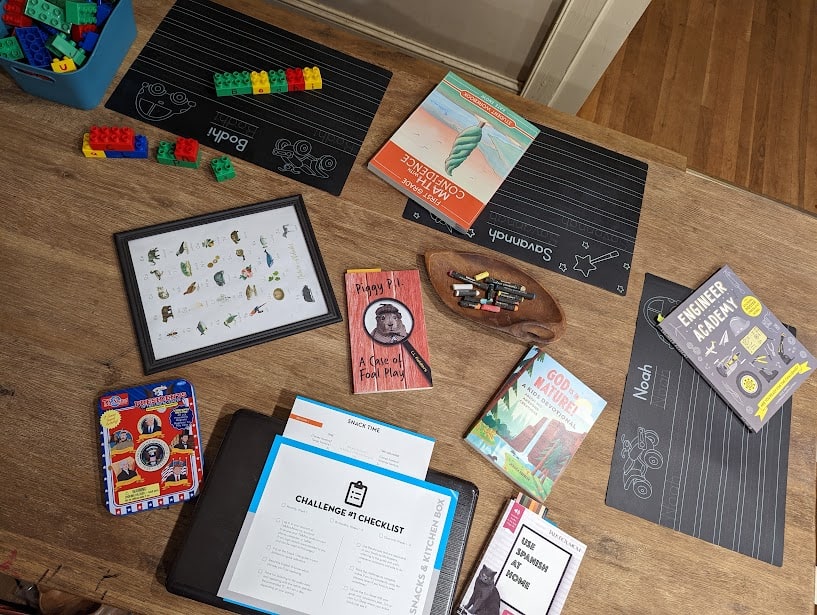
- Create a flexible schedule. What time will you start? When will you have breakfast and lunch? Are there weekly activities you attend? Add all the “have tos” to this schedule and fill in the homeschool work in between these daily/weekly anchors. When I first started homeschooling, I made a rigorous, down to the minutes, schedule. Consequently, that didn’t even last a week! Life happens and you have to be able to move with it. If your schedule is too fixed there is no wiggle room for spontaneous play dates, a child that needs a mental break, or your dog deciding to throw up (yes this happens and typically causes everyone to lose focus!).
- Teach as many subjects as you can to the entire group. I try to tailor the homeschooling subjects and topics to fit all the kids ages. This works great for group reading, Bible study, nature study, cooking, and geography/history. I read a family read aloud book weekly while the kids play Legos, play dough, paint/draw or something else to keep their hands busy. When it comes to the other subjects mentioned, I use a common topic and give each child age appropriate work related to that topic. As a result, everyone is learning the same things, just at their own level.
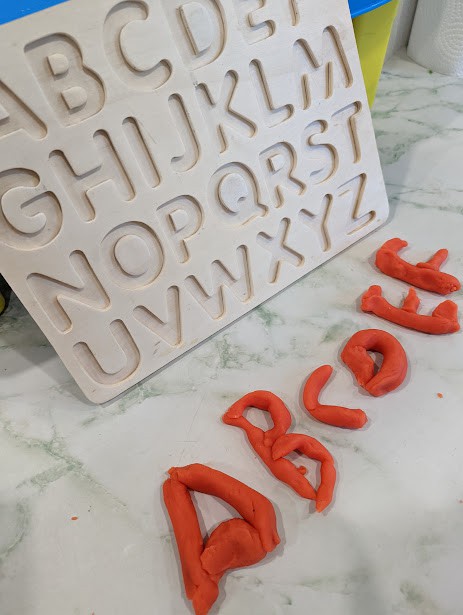
- Sit in the same room. For 85% of the time, I have all the kids sit at the table together to do their work or we will be outside together. It makes it easier on me, so I am not running to different rooms/areas of the house.
- Choose a co-op that works for all your kid’s ages. The Triad is a treasure-trove of wonderful homeschool groups. Plus, many of them can accommodate multiple ages. One great example of these is the Wild + Free groups. Moreover, these groups perfect for families with multiple kids that love finding community with common values. Plus, this keeps you from having to run from one group to another.
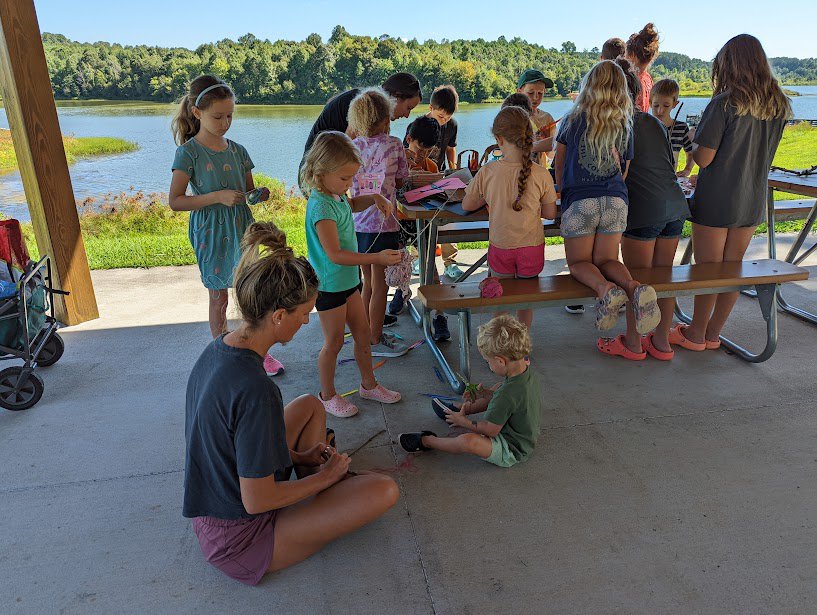
- If you have a young child, a busy box is a great idea to have on hand. These are a perfect distraction while you are teaching one-on-one with an older child. A busy box typically includes fun learning toys, games and hands-on activities. A few examples include bead threading, building blocks, activities books, cars, dolls, and anything you know would be interesting to your child. Here is a link to some great busy box ideas. Though, only let them play with these boxes during “school” time. That way they stay interesting and desired to the child.
- Take a snack break! If you feel you are losing everyone and tempers are getting high, then it is time for a snack. Not surprisingly, even I have moments where I just need to stop and have a little snack. It gives everyone time to take a breathier and have a mental break. In addition, if it feels right in the moment, you can even use snack time as family reading time. As they eat, you read a book to them.
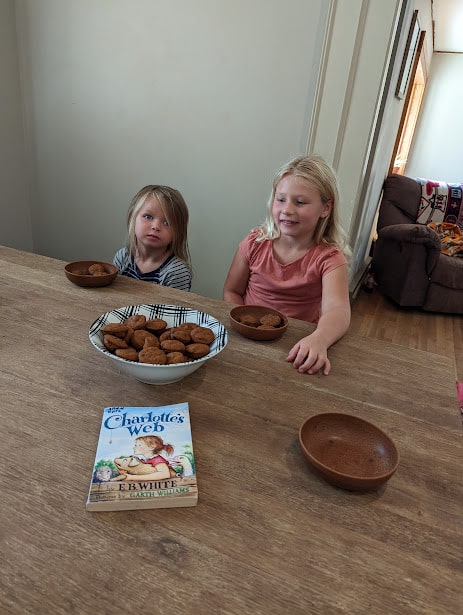
- Have fun games for everyone. Another idea for when everyone seems done but you still want to incorporate learning, pull out a game. There are lots of board, card and learning games that you can play with the kids that won’t even feel like learning. Here is a link to learning game ideas.
- Take field trips for the entire family. Most field trips will interest and teach all ages of children and even their parents! A few ideas are historic sites, National or State parks, local factory tours (Mrs. Hanes Cookies), farms and the zoo. Just by being at these locations, your youngest will learn something. For older kids, you can incorporate scavenger hunts, fact sheets or have them ask specific questions to tour guides.

- If all else fails, go outside! Nothing can change the attitude and mindset for everyone like going outside and getting fresh air. Honestly, it doesn’t matter what time of year or the weather, for you to enjoy being outdoors. Remember to dress for the weather, use sun or shade to your advantage. Do physical activities to expel energy, and look at nature to evoke curiosity. You can even take your schoolwork outside! That is the beauty of homeschooling; you can do it anywhere you want. It does not have to be at a desk or kitchen table.
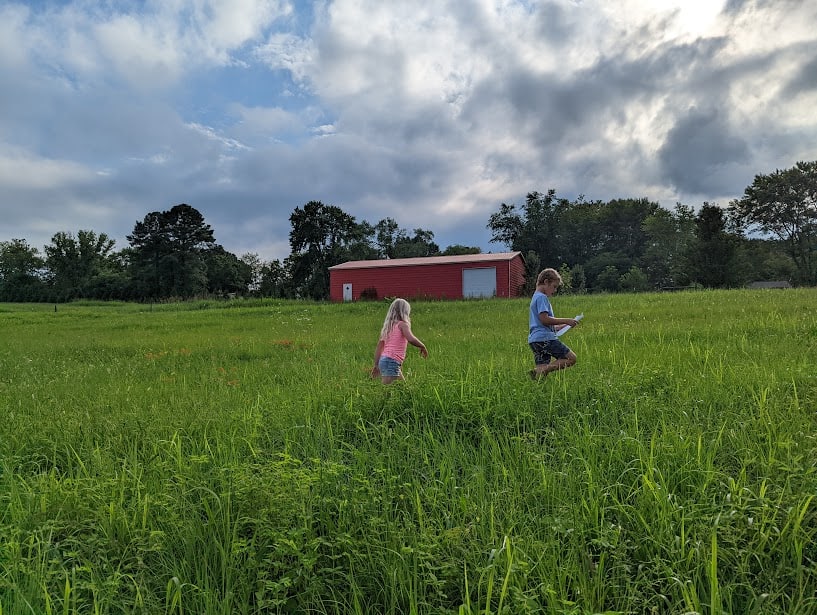
Homeschooling is not a one plan fits every family. You can tailor it to work for your unique family. Schooling does not have to be 8 hours a day, 5 days of week. We learn as we live, play and interact with society. Consequently, that’s a great realization when you have kids of all ages.
I hope some of these tips will help you in your homeschool journey. If you have homeschooled multiples, what are some tips you would add to this list? Don’t forget, TMoM has a Homeschool in the Triad directory filled with all things homeschooling.
Wishing you all a great homeschool year!
By TMoM Team Member Sandy Harper
Want to see more blogs like this and also get notifications on local events and happenings? Subscribe to our free weekly newsletters.

